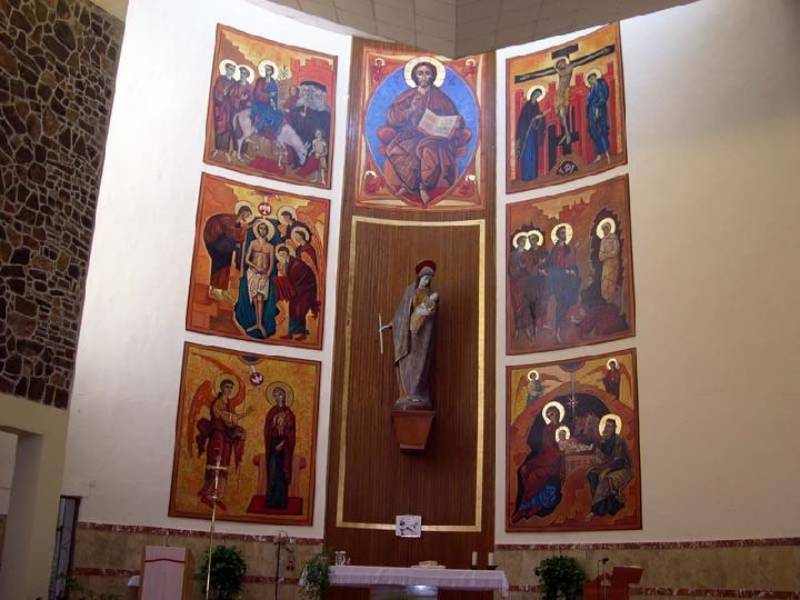- Region
- Águilas
- Alhama de Murcia
- Jumilla
- Lorca
- Los Alcázares
- Mazarrón
- San Javier
-
ALL AREAS & TOWNS
- AREAS
- SOUTH WEST
- MAR MENOR
- MURCIA CITY & CENTRAL
- NORTH & NORTH WEST
- TOWNS
- Abanilla
- Abarán
- Aguilas
- Alamillo
- Alcantarilla
- Aledo
- Alhama de Murcia
- Archena
- Balsicas
- Blanca
- Bolnuevo
- Bullas
- Cañadas del Romero
- Cabo de Palos
- Calasparra
- Camping Bolnuevo
- Campo De Ricote
- Camposol
- Canada De La Lena
- Caravaca de la Cruz
- Cartagena
- Cehegin
- Ceuti
- Cieza
- Condado de Alhama
- Corvera
- Costa Cálida
- Cuevas De Almanzora
- Cuevas de Reyllo
- El Carmoli
- El Mojon
- El Molino (Puerto Lumbreras)
- El Pareton / Cantareros
- El Raso
- El Valle Golf Resort
- Fortuna
- Fuente Alamo
- Hacienda del Alamo Golf Resort
- Hacienda Riquelme Golf Resort
- Isla Plana
- Islas Menores & Mar de Cristal
- Jumilla
- La Azohia
- La Charca
- La Manga Club
- La Manga del Mar Menor
- La Pinilla
- La Puebla
- La Torre
- La Torre Golf Resort
- La Unión
- Las Palas
- Las Ramblas
- Las Ramblas Golf
- Las Torres de Cotillas
- Leiva
- Librilla
- Lo Pagan
- Lo Santiago
- Lorca
- Lorquí
- Los Alcázares
- Los Balcones
- Los Belones
- Los Canovas
- Los Nietos
- Los Perez (Tallante)
- Los Urrutias
- Los Ventorrillos
- Mar De Cristal
- Mar Menor
- Mar Menor Golf Resort
- Mazarrón
- Mazarrón Country Club
- Molina de Segura
- Moratalla
- Mula
- Murcia City
- Murcia Property
- Pareton
- Peraleja Golf Resort
- Perin
- Pilar de la Horadada
- Pinar de Campoverde
- Pinoso
- Playa Honda
- Playa Honda / Playa Paraíso
- Pliego
- Portmán
- Pozo Estrecho
- Puerto de Mazarrón
- Puerto Lumbreras
- Puntas De Calnegre
- Region of Murcia
- Ricote
- Roda Golf Resort
- Roldan
- Roldan and Lo Ferro
- San Javier
- San Pedro del Pinatar
- Santiago de la Ribera
- Sierra Espuña
- Sucina
- Tallante
- Terrazas de la Torre Golf Resort
- Torre Pacheco
- Totana
- What's On Weekly Bulletin
- Yecla


- EDITIONS:
 Spanish News Today
Spanish News Today
 Alicante Today
Alicante Today
 Andalucia Today
Andalucia Today
The village of Barranda in Caravaca de la Cruz
A popular rural tourism destination with a prestigious musical museum on the high ground of north-western Murcia
 Barranda is a small village in the high ground of north-western Murcia on the RM-730 road between Caravaca de la Cruz and La Puebla de Don Fadrique in the province of Granada, and has become a popular rural retreat which attracts visitors all year round due to its cool climate – snow is far from uncommon in winter – and the musical traditions of the locality.
Barranda is a small village in the high ground of north-western Murcia on the RM-730 road between Caravaca de la Cruz and La Puebla de Don Fadrique in the province of Granada, and has become a popular rural retreat which attracts visitors all year round due to its cool climate – snow is far from uncommon in winter – and the musical traditions of the locality.
 These traditions are kept alive by the Museum of Ethnic Instruments, which houses the Carlos Blanco Fadol collection, the “Cuadrillas” festival which takes place over the last weekend of January every year, and the “A La Luna de Barranda” summer folk music concert cycle, which draws in good crowds including those who are spending the summer away from the hustle and hustle (and heat) of the coast!
These traditions are kept alive by the Museum of Ethnic Instruments, which houses the Carlos Blanco Fadol collection, the “Cuadrillas” festival which takes place over the last weekend of January every year, and the “A La Luna de Barranda” summer folk music concert cycle, which draws in good crowds including those who are spending the summer away from the hustle and hustle (and heat) of the coast!
The village stands close to the River Argos, the mountains of Sierra de Mojantes and Sierra del Gavilán, and the natural beauty spot of Las Tosquillas, just a kilometre or so outside the village. It is home to under 1,000 residents but this figure swells considerably during holiday periods, with plenty of rural accommodation available.
The most important fiestas of the year are those which are held in honour of the Virgen de la Candelaria between the last Sunday of January and February 2. These feature the Día de las Cuadrillas, a folk music and dancing event which has been awarded Regional Tourist Interest status.
The history of Barranda goes back at least to Iberian and Roman times, as is testified by the archaeological discoveries of the remains of several “villae” in the area, while in later centuries the Moors created irrigation channels and systems some of which are still in use today. After the “Reconquista” of this part of Spain by Christian forces in the 13th century Barranda, like Caravaca, was close to the ever-changing boundary between the lands belonging to Aragón, Castilla and the remaining Nazrid Moorish kingdom of Granada.
By the 16th century there is documented reference to the place known as “Fuen Barreanda", which was characterized by a proliferation of natural water sources, but it was not until the liberation of land ownership laws in the 19th century that the village truly began to grow in population.
 At the centre of the village is the relatively modern church dedicated to the Purificación or Candelaria. Building began in 1964 and the church was consecrated two years later, and of course the architecture is modern in style with plenty of vertical and horizontal lines – perhaps out of keeping with the rustic surroundings. The inside is not overly decorated and the ambience is determined by the light from numerous stained glass windows.
At the centre of the village is the relatively modern church dedicated to the Purificación or Candelaria. Building began in 1964 and the church was consecrated two years later, and of course the architecture is modern in style with plenty of vertical and horizontal lines – perhaps out of keeping with the rustic surroundings. The inside is not overly decorated and the ambience is determined by the light from numerous stained glass windows.
The most important pieces of religious artwork are the figure of La Candelaria which stands above the altar, a ceramic mosaic Bia Crucis, the four evangelists who flank the main entrance and the oil paintings above the main altar.
Prior to this church a simpler building had existed since the 17th century but it slowly declined in condition.
For more local information, including the Holy Jubilee Year as well as local news and what’s on, go to the home page of Caravaca Today.







